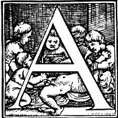
ndreas Vesalius was a Belgian anatomist who transformed our understanding of the human body through the pages of his illustrated volume De humani corporis fabrica (On the Fabric of the Human Body), first published in 1543 and dedicated to the Holy Roman Emperor Charles V. Until then, human anatomy had been dominated by the received wisdom of Galen of Alexandria.
There had been little imperative to check what he had to say, and Vesalius showed that a good deal of Galen’s information about human anatomy had been derived from dissections of animals rather than humans. The ancients also provided only words, no pictures, in their description of our anatomy. In the first plate of the human frontal muscle system, shown here, Vesalius wanted these pictures not only to educate anatomists and surgeons as to the detailed local structure of bodily organs, but to display a total view of the scheme of muscles such as “only painters and sculptors are wont to consider”. In the background to the series of plates of this type there are scenes from the Abano Terme region of Padua, which form a continuous panorama of the landscape if the plates are placed side by side.
Vesalius was the first to present a complete and detailed picture of the interior of the human body, which he illustrated by more than 200 meticulously prepared woodcuts showing bones, arteries, muscles, brain tissue, and all of the vital organs. His proud display of the tools of his dissecting trade near the outset was designed to show the reader that he was not merely passing on old information and hearsay. Moreover, armed with the tools shown in the picture below, readers could check what was written for themselves! Many of his dissections were open to the public, who were encouraged to come and confirm his claims, although the cadavers he used were on occasion obtained by snatching bodies from graves (a point he confesses to in the book) or accepting the victims of state executions. The dedication to the Holy Roman Emperor of what might appear a rather gruesome assembly was to show his awe and wonder at God’s design of the human body in all its amazing detail.
Vesalius trained at Louvain and became a lecturer in Padua, whose great anatomical theatre – although damaged in Second World War bombing and then rebuilt – can still be seen today.
He was only 28 years old when his remarkable book appeared. About 500 copies were originally printed and 130 of them are known to survive today. Each contains 700 folio pages, bound according to the tastes of its owner. De humani corporis fabrica was published in the same year as Copernicus’ De revolutionibus. It is potentially of similar importance in the history of science. It was certainly studied and used more than Copernicus’ work. Its beautifully detailed drawings exposed the intricacy of the human body in ways that encouraged others to emulate his detailed practical studies. He signalled the beginnings of the Renaissance in our understanding of anatomy – a Fantastic Voyage of the mind for the reader of its day. For students and researchers today it carries the worrying implication that to be a leading anatomist you needed to be a world-class draughtsperson as well.
What happened later? The canonical medical text today is Henry Gray’s Anatomy, Descriptive and Surgical, first published in 1858, which has established itself as the bible of anatomy for students ever since. Known now simply as Gray’s Anatomy, its 989 original pages have run through many editions and upgrades in presentational quality. But when it first appeared, it displayed a bland technical style of drawing that signalled the end of the era of the great anatomical artists. It was a textbook, plainly bound and presented in businesslike fashion. It contained “figures” and “diagrams” rather than pictures.
The 363 plates, drawn by Henry Vandyke Carter, are detailed but flat, accurate but unthreatening pictures of small parts of the body, but never the whole. Where Vesalius’ bodies looked like the living dead, and threatened to rise again, Gray’s corpses were body parts, organs of pathological study rather than objects of wonder. Gray’s Anatomy brought the curtain down on three centuries of dramatic anatomical art, replacing it by technically accurate but lifeless anatomy.
